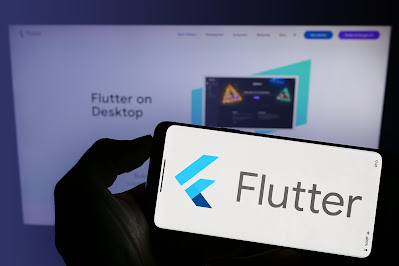Multi-View and Multi-Window Support in Flutter: Designing for Complex Layouts
Flutter, Google's UI toolkit, has always excelled at building beautiful, natively compiled applications from a single codebase across mobile, web, and desktop. While its single-codebase promise is incredibly powerful, the demands of modern mobile applications, especially on larger screens, often extend beyond a single, monolithic window. This is where the evolving multi-view and multi-window support in Flutter steps in, opening up exciting possibilities for designing truly complex and immersive user experiences.
The Need for More Than One
Traditionally, Flutter apps on the web rendered into a single HTML element, and desktop apps were confined to a single window. While this streamlined development for many use cases, it presented limitations for applications requiring:
Dashboards and data visualization: Displaying multiple independent charts or data streams simultaneously.
Creative applications: Offering separate tool palettes, property inspectors, and canvas views.
Productivity tools: Allowing users to view different documents, conversations, or tasks side-by-side.
Complex user flows: Guiding users through multi-step processes with auxiliary windows for information or input.
The good news is that Flutter is continually evolving to address these needs, offering more granular control over how and where your content is rendered.
Multi-View on the Web: Beyond a Single Canvas
For Flutter web applications, the concept of "multi-view" allows you to render different parts of your Flutter application into multiple distinct HTML elements on a single web page. This is a game-changer for web integration and complex web layouts.
Imagine a web page with existing HTML content, and you want to embed a Flutter-powered interactive chart in one divand a Flutter-driven data table in another, all while maintaining a cohesive user experience. This is now becoming more feasible.
Key capabilities for web multi-view include:
Embedding Flutter views into arbitrary HTML elements: You can specify a
hostElementwhen initializing your Flutter engine on the web, directing a specific Flutter "view" to render within that DOM element.Managing Flutter views from JavaScript: The host web application can dynamically add or remove Flutter views, allowing for flexible and interactive embedding.
Notifying Flutter of view changes: Your Flutter application can be aware of when its views are added or removed, enabling it to adjust its widget tree and state accordingly.
Replacing
runAppwithrunWidget: For multi-view scenarios, you often move away from the traditionalrunAppthat assumes a single implicit view. Instead, you can userunWidgetto explicitly render a widget into a specific view.
This capability blurs the lines between traditional web development and Flutter, allowing developers to leverage Flutter's expressive UI capabilities for specific components within a larger web ecosystem. It's particularly powerful for progressive enhancements or integrating Flutter into existing web applications without a full rewrite.
Enhanced Multi-Window Support on Desktop: True Desktop Experiences
On desktop platforms (Windows, macOS, Linux), the evolution of multi-window support is about moving beyond a single main application window to providing users with a truly native multi-window experience. This means your Flutter desktop application can launch and manage multiple, independent top-level windows.
While Flutter's core framework currently doesn't provide an "out-of-the-box" abstraction for multi-window management, the community has stepped up with robust solutions like the desktop_multi_window plugin. This plugin allows developers to:
Create new native windows: Programmatically spawn additional windows from your main application.
Instantiate separate FlutterEngines: Each new window can run its own independent Flutter engine, offering true isolation and performance benefits.
Control window properties: Set window size, position, title, and even bring windows to focus.
Enable inter-window communication: Send messages and invoke methods between different Flutter windows, allowing for synchronized data or coordinated actions. This is crucial for building interconnected multi-window applications.
Why is this significant for complex layouts?
Improved user workflow: Users can arrange windows as they prefer, tailoring their workspace to their needs.
Enhanced productivity: Side-by-side views of different aspects of the application (e.g., a code editor and a live preview).
Specialized tools: Dedicated windows for specific functions, like a detailed property panel that can be detached and moved.
Rich interactive experiences: Imagine a design application where you have a main canvas window, and then separate floating windows for layers, brushes, and color palettes.
Designing for the Multi-Dimensional Canvas
With these advancements, designing for Flutter applications becomes a more multi-dimensional endeavor. Here are some key considerations:
State Management: How will state be shared or synchronized between different views or windows? Will you use global state management solutions (e.g., Provider, Riverpod, Bloc) or implement more granular inter-process communication (IPC) for desktop?
Navigation and Routing: How will navigation work within and across different windows or embedded views? Will you have a central routing mechanism that can target specific windows or HTML elements?
Responsiveness and Adaptive Design: Each window or embedded view might have different dimensions. Your widgets need to be responsive and adapt gracefully to varying sizes.
User Experience (UX): Consider how users will interact with multiple windows. How will they open, close, and switch between them? Provide clear visual cues and intuitive controls.
Performance: While separate Flutter engines can help with isolation, be mindful of resource consumption, especially when dealing with many complex views or windows. Optimize rendering and data handling.
The Future is Flexible
The ongoing development of multi-view and multi-window support in Flutter is a clear indication of its maturity as a platform for building sophisticated applications beyond simple mobile experiences. By embracing these capabilities, developers can create more powerful, flexible, and user-friendly applications that truly leverage the advantages of larger screens and multi-tasking environments, pushing the boundaries of what's possible with a single codebase. As Flutter continues to evolve, we can expect even more streamlined and built-in solutions for these complex layout scenarios.




Comments
Post a Comment